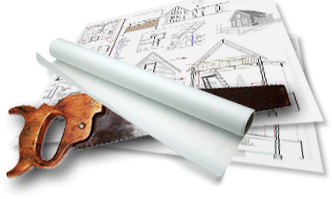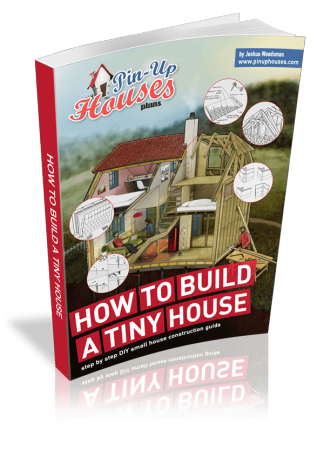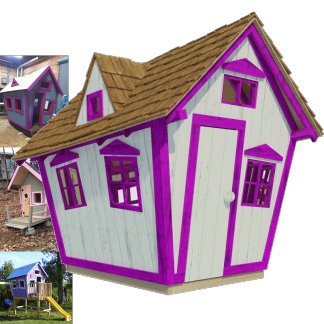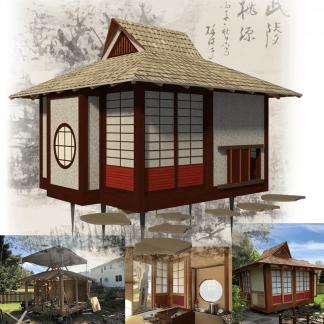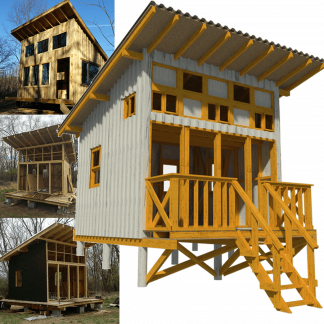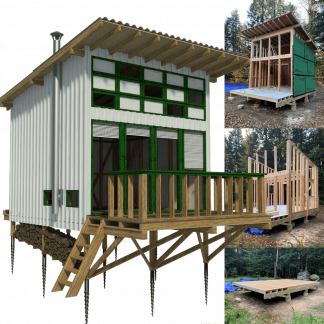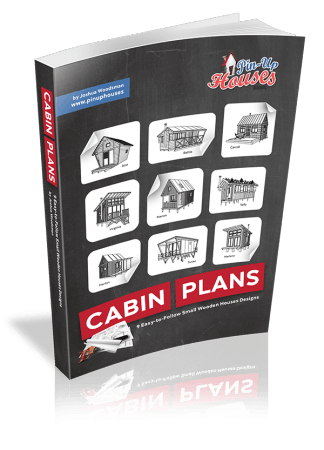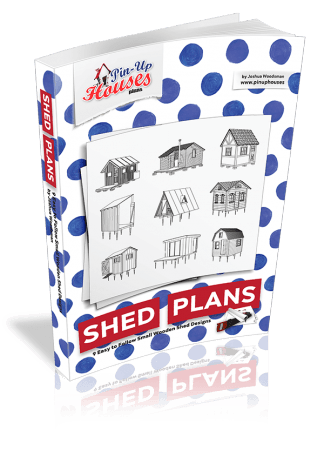Many don’t talk about the ‘door’. It’s always there, opening and closing, doing its door thing… But when you really put a bit of thought into it, a door opens a way to your home, or your office, etc. You interact with it quite often. And it provides security and privacy.
Many tiny houses, or small cabins, are built with lightweight doors. This is due to reduced costs and template-style building. Often, the cheapest one is picked and not much thought is put there. And these types of doors often aren’t designed for harsh weather conditions or security purposes. They’re just… doors. And after a while, they become loose, squeaky, wobbly, annoying, less functional, and less secure.
So what about reinforcing it? Sounds complicated, but it’s really not.
This article is here to show you why you should reinforce your shed door today. And how.
How Do You Even Know If Your Shed/Tiny Home Door Needs Reinforcement?
Not every single door needs reinforcement. But it’s still good to recognize when one might.
Here are some of them:
- When it’s windy and your door rattles or shakes: When you hear your door wiggle, that means it might not be strong enough.
- The lock doesn’t function properly or feel loose: If someone can open the door easily from outside as well, that (obviously) isn’t ideal, or very safe.
- If you see light coming through the edges: This means your door isn’t sealed properly, and bugs/wind can get in.
- If you feel cold air coming through the edges: That would also mean the door isn’t sealed properly.
- The door is damaged or old: If it looks worn out, then reinforcing it can help a lot.
- The hinge appears rusty or contains loose screws: Those small screws hold the door in place, if they are weak, the door is also weak.
If you’ve noticed any of these signs, it’s time to reinforce the door. Many fixes are easy and you don’t need to have experience or any special skill, and you definitely don’t need expensive tools.
How to Reinforce a Door?
What does it mean to reinforce a door? It means to make your door safer, stronger, and better at protecting your home. Not only that, it’s also going to provide more privacy since a more robust door is better at absorbing sound (still depends on materials used and its construction). So, the room is also going to be quieter.
For a lot of people, a door is just there. It opens and closes, but it’s a movable barrier that protects you from bad weather, animals, or maybe people if they try to break in. If your door is weak, it means one thing: it needs reinforcements.
Here are common methods people use to reinforce shed or tiny-home doors:
- Upgrade (or buy) a better lock – Deadbolts are stronger than standard ones, so that way is harder to break in.
- Tight screws – It’s best to replace or tighten any loose screws. You can use longer screws on hinges and lock plates to enhance the door’s resistance so they are harder to pull open or break.
- Door sweep – Most come with detailed instructions, but to install one, take the door’s measurement, clean the area, line up the sweep so it touches the floor, and then secure it in place with either screws or adhesive.
- Upgrade the strike plate – That’s a small metal piece on the door frame where the lock engages. A stronger one creates a big difference by making it harder for someone to break in. Plus that ‘click’ sound will be more satisfying. Unscrew the old one from the door frame, place the new one in the same spot, and you can screw it in using a longer screw so it can hold better.
- Use weather stripping – Flexible strips placed around the edge of the door to prevent drafts (they also help with soundproofing).
Can You Do It Yourself (DIY)?
Of course you can. Most doors are suitable for beginners upgrading, and with no fancy tools. The door frame might be a bit trickier, but just the door, that isn’t too difficult.
A drill, a screwdriver, and a little of your time are mostly enough. There are plenty of guides and videos online to help, so you don’t need to have so or literally any experience. You don’t have to be a professional; just take it step by step.
If you consider your door is actually old or quite damaged, it’s a good idea to go for replacement shed doors and to be sure your shed or tiny home is extra secure. A quality replacement can save your time and extra unexpected costs in the long run. A new door comes with suitable materials and some new features that keep your space extra protected.
Conclusion
Reinforcing the shed door shouldn’t be complicated or expensive. You can make a massive difference in how your door ‘behaves’ simply by placing a few secure screws and/or a weather stripping. It isn’t difficult. It takes just a bit of effort and time to reinforce your doors so make sure you take your time and do each step properly!
Just this tiny change can make you feel more secure and comfortable in your own space.

